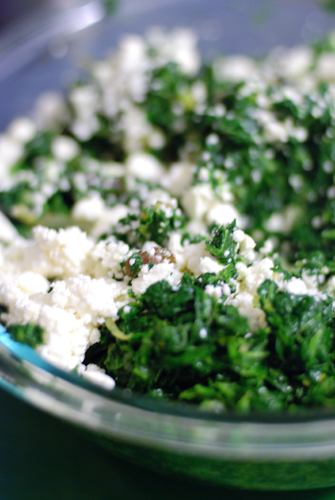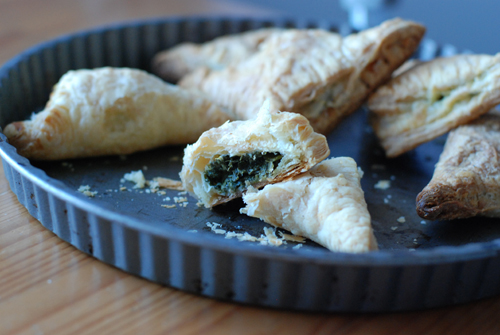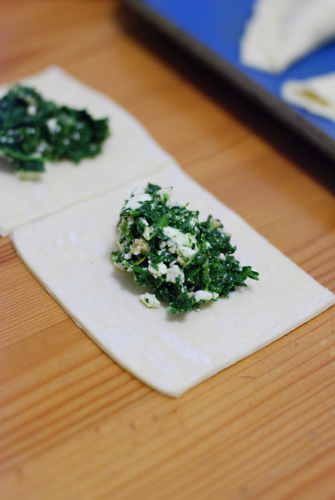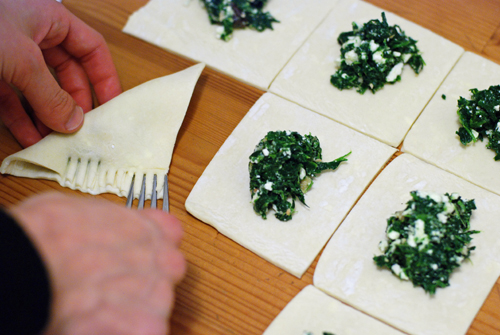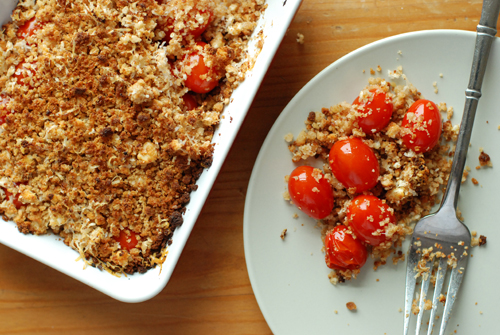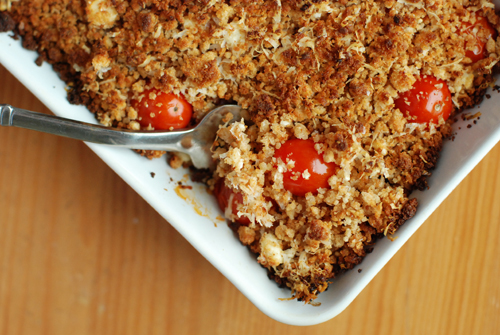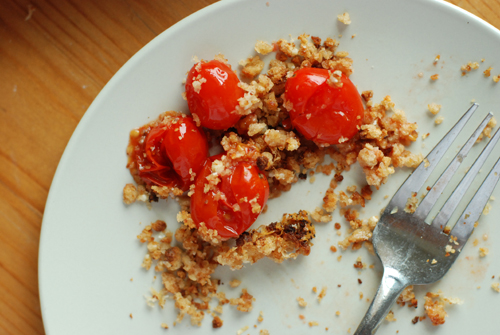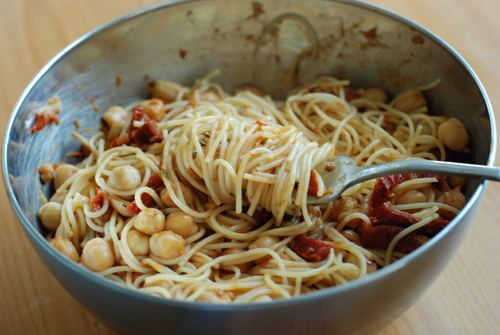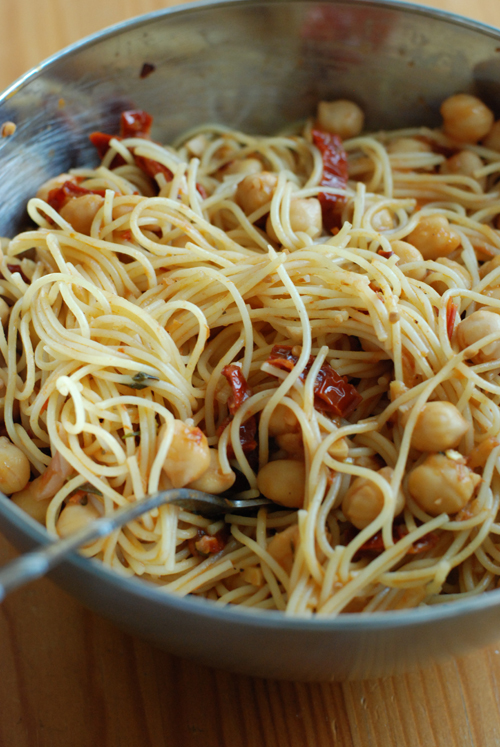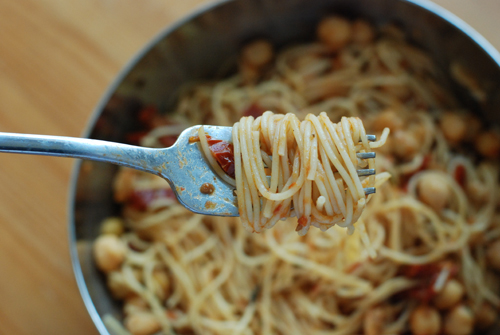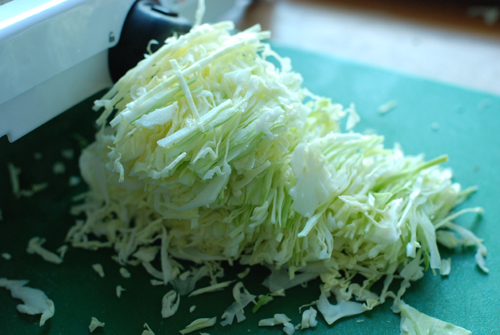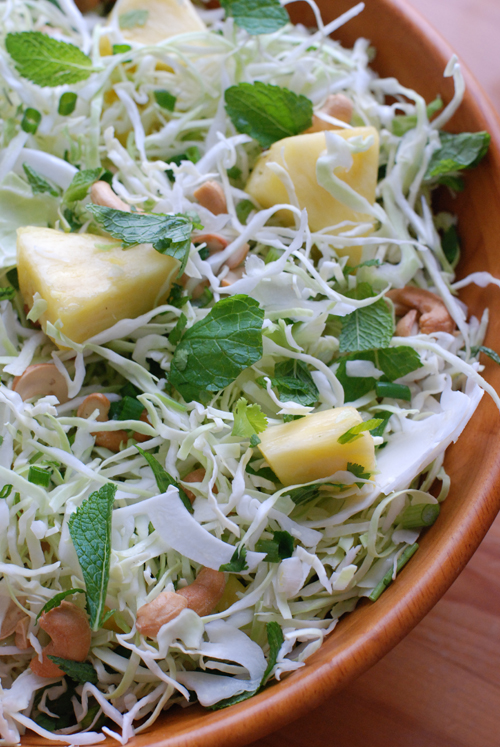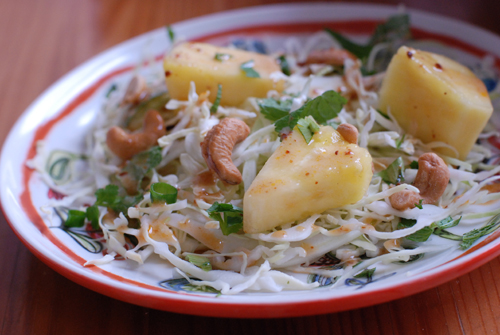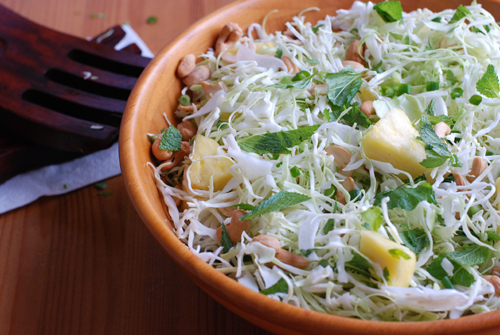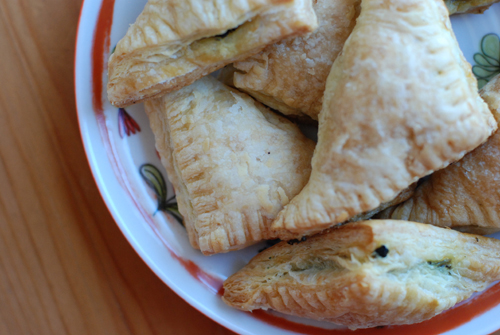 At some point last year, I fell off the puff pastry cliff. It all started with this onion-date tart, one of the best and easiest recipes I've ever written. I made it once, twice, three times, and more; I couldn't stop. I'd tweak a thing or two every time: I'd add mushrooms, swap the goat cheese for feta, add some roasted red peppers, etc. The tart never failed to please, so I just didn't stop making it.
At some point last year, I fell off the puff pastry cliff. It all started with this onion-date tart, one of the best and easiest recipes I've ever written. I made it once, twice, three times, and more; I couldn't stop. I'd tweak a thing or two every time: I'd add mushrooms, swap the goat cheese for feta, add some roasted red peppers, etc. The tart never failed to please, so I just didn't stop making it.
From there, I branched out to other similar tarts, like this one with zucchini and olives. Why hadn't I thought of this sooner? Why had it taken so long to realize that when you pile delicious stuff on a buttery piece of dough and bake it off, the results are...delicious?
Just when I thought I'd had my revelation, D had had just about enough. She finally confessed that she hated all these tarts -- these big pieces of flaky dough meant to pose as entrees -- and that if I could stop making them, forever, that'dbegreatthanks. I was bummed: had I reached the end of puff pastry heaven so quickly? Without it, what else would I make? There was NOTHING else to make! Nothing but puff pastry! AACK!
Needless to say, I moved on. I made other delicious things like baked pastas and quiches and even the occasional (gasp!) meat dish. I moved on so well, in fact, that I actually forgot about puff pastry entirely. That is, until my friend Jeremy asked me to make some bourekas for a potluck he and his wife Beth hosted this weekend.
Given that I lived in Israel for two years, where bourekas could easily make a run against falafel, hummus, and schnitzel for the country's national dish, it's hard to believe that they haven't come up on NDP before today. I guess I don't make them as often as I'd have thought. But they're really very easy to make, they keep well and reheat like a charm, and they're as appropriate for a fancy meal as they are in a ziplock baggie.
Using the recipe below, I made about 50 bourekas before running out of puff pastry. I sandwiched the leftover filling between layers of filo dough for an easy mid-week pie that was a close relative of spanikopita.
Spinach Bourekas adapted from Ina Garten's spanikopita recipe makes about 50, plus extra filling
1/4 cup good olive oil 1 cup chopped yellow onion 3 scallions, white and green parts, chopped 2 (10-oz) packages frozen chopped spinach, defrosted 4 eggs, lightly beaten 3 tablespoons parmesan cheese 3 tablespoons plain dry bread crumbs 1 teaspoon freshly-grated nutmeg 2 teaspoons salt 1 teaspoon black pepper 2 cups diced feta cheese 3 tablespoons toasted pine nuts 3 tablespoons golden raisins 1 small wedge lemon 3 packages (6 sheets) puff pastry, defrosted
Preheat the oven to 375 degrees
Heat olive oil over medium heat in a large saute pan. Add onion and cook for 5 minutes, until soft but not browned. Add scallions and cook two more minutes, until wilted. Meanwhile, squeeze the water out of the chopped spinach and transfer to a large bowl.
Add cooked onions and scallions to spinach and stir to combine. Mix in eggs, parmesan, bread crumbs, nutmeg, salt, pepper, and raisins. Squeeze in lemon juice; gently fold in feta and pine nuts.
Sprinkle working surface with flour. Place one sheet of puff pastry on suface and roll it out to about 1/8-inch thick, rotating it 90 degrees after each roll to ensure that dough grows evenly and doesn't stick. Use more flour as necessary. Once dough is proper size, cut the dough into three lengthwise and three horizontally, dividing the dough into nine equally-sized squares.
Place two tablespoons filling into the middle of each square. Dip your finger in a bit of water and run it along the edges of the square, then bring one corner its opposite corner and seal to make a triangle. Use the tines of a fork to make a decorative edge and ensure that bourekas stay shut.
Place bourekas on parchment or silpat-lined baking sheet and bake about 25 minutes, until golden on top. Serve warm or at room temperature.
